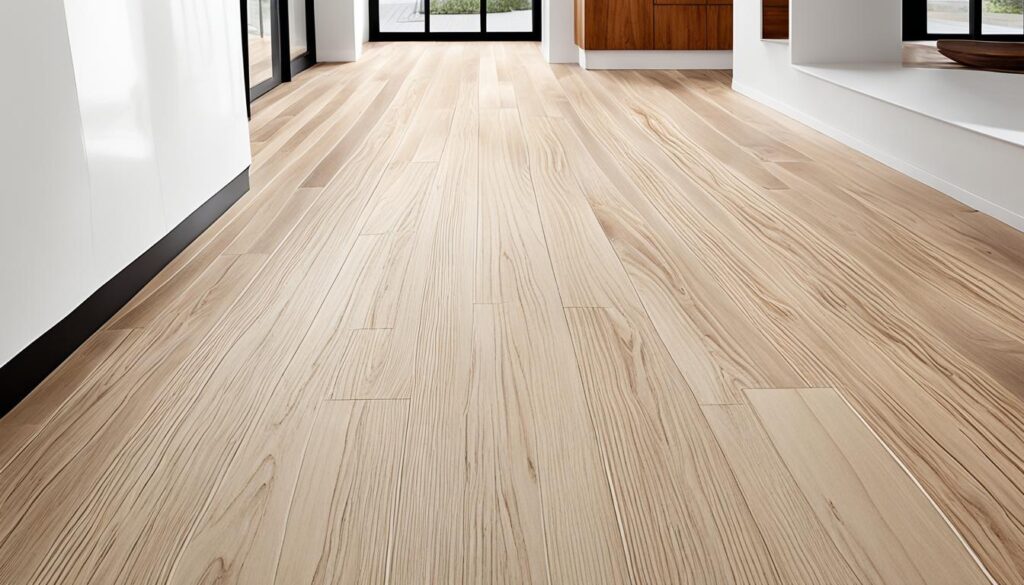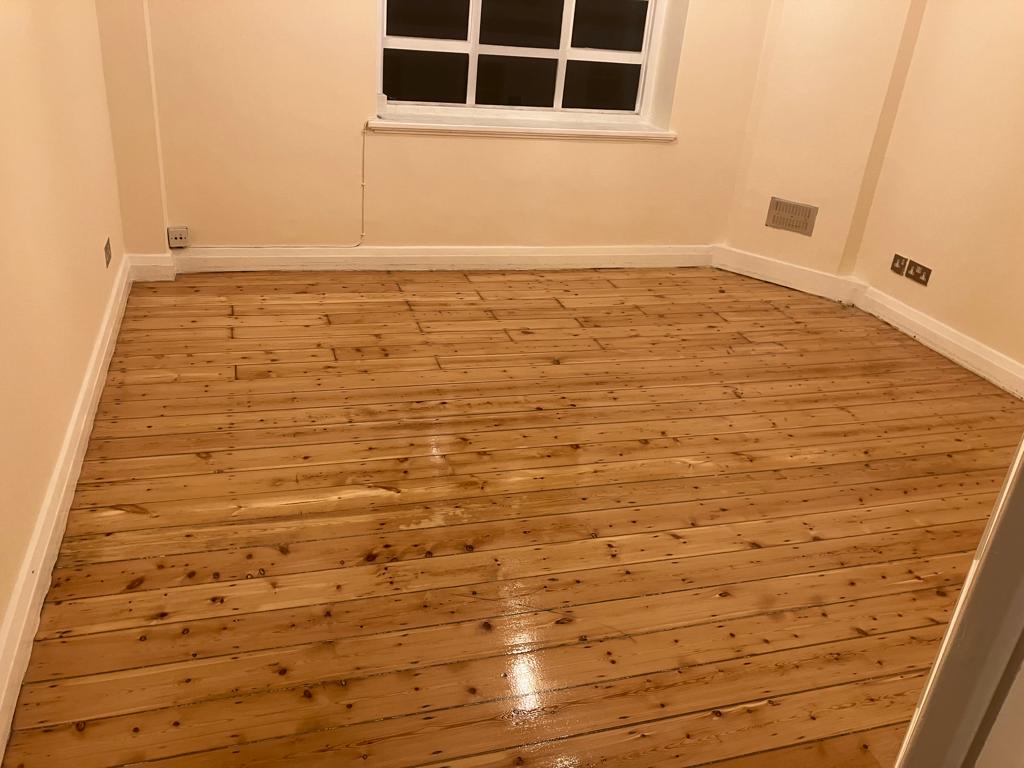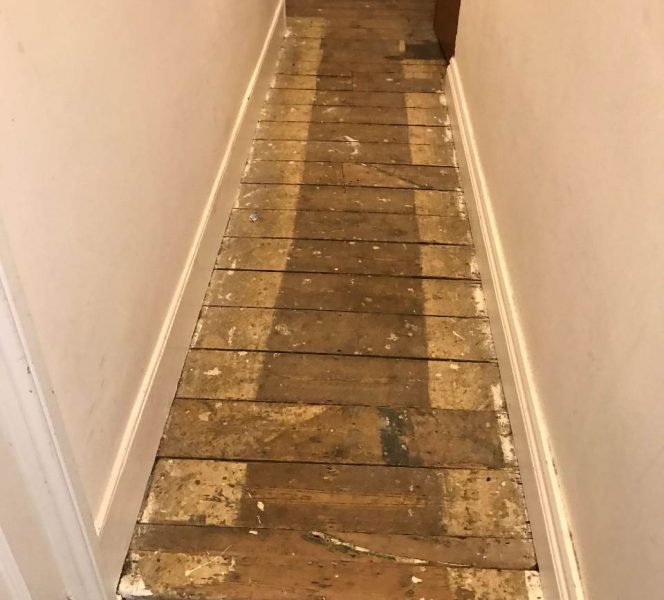Hardwood flooring has a rich history that spans centuries, evolving from traditional craftsmanship to cutting-edge innovations. Centuries ago, hardwood flooring was a symbol of luxury, reserved for the homes of royalty and nobility. The Industrial Revolution brought mass production and design diversity to hardwood flooring, making it more accessible to the general public. In recent decades, engineered hardwood has emerged as a versatile and practical alternative, offering greater stability and resistance to moisture. Current trends embrace wider and longer planks, random widths, and creative designs. Sustainable practices have become a priority in the hardwood flooring industry, with bamboo, salvaged, and reclaimed wood gaining popularity as renewable and recycled alternatives. The future of hardwood flooring includes smart flooring that integrates technology, as well as innovative finishes and textures to enhance durability and mimic natural wood. Hardwood flooring continues to be a cornerstone of timeless elegance in our homes.
Key Takeaways
- Wood floor renovation combines tradition and innovation to create sustainable design solutions.
- Hardwood flooring has a rich history and continues to evolve to meet modern needs and trends.
- Engineered hardwood offers stability and moisture resistance, while wider and longer planks are popular choices.
- Sustainable practices, such as using bamboo or reclaimed wood, are growing in popularity.
- The future of hardwood flooring includes smart technology integration and innovative finishes.
The Underlying Structure of Wood Floors
When it comes to wood flooring, the underlying structure plays a crucial role in its performance and longevity. An essential component of this structure is the underlayment, which serves multiple functions to ensure a stable and durable wood floor.
First and foremost, underlayment provides a smooth and flat surface for the installation of the wood floor. It helps to level out any imperfections and irregularities in the subfloor, creating a solid foundation for the flooring material.
Additionally, underlayment acts as a moisture barrier, protecting the wood floor from potential damage caused by moisture or water vapor. By preventing moisture from seeping into the wood, it helps to maintain the structural integrity of the floor and prevent issues such as warping or cupping.
Another important role of underlayment is its ability to reduce sound transmission. It effectively absorbs sound vibrations, making the wood floor quieter and preventing the transfer of noise between floors.
Two common types of underlayment used for wood floors are plywood and engineered hardwood. Plywood provides excellent stability and durability, making it a popular choice for underlayment. Engineered hardwood underlayment, on the other hand, offers insulation properties and is often used in areas where temperature control is important.
The choice of underlayment can significantly impact the performance and lifespan of the wood floor. It is essential to select an underlayment that is suitable for the specific flooring material and the requirements of the space.
Benefits of a Proper Underlayment:
- Provides a smooth and flat surface for the wood floor installation
- Serves as a moisture barrier to protect against damage
- Reduces sound transmission, creating a quieter environment
- Improves stability and durability of the wood floor
- Offers insulation properties for temperature control
By understanding the importance of the underlying structure and choosing the appropriate underlayment, homeowners can ensure the longevity and performance of their wood floors.
| Underlayment Type | Features |
|---|---|
| Plywood | Excellent stability and durability |
| Engineered Hardwood | Insulation properties, suitable for temperature control |
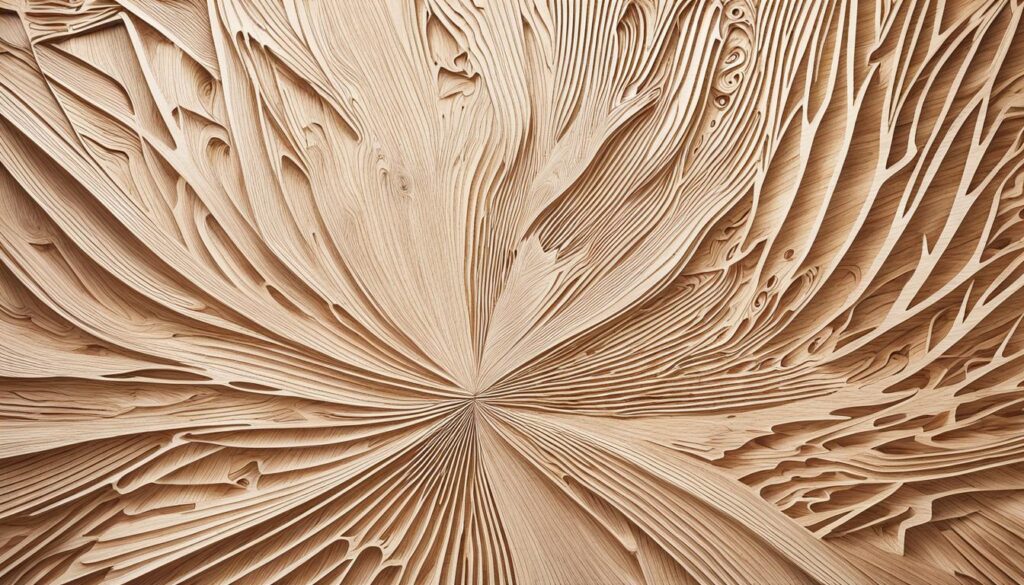
The Expanding Market of Wood Flooring
The wood flooring market is experiencing a significant growth trajectory, with a market size value of $47.5 billion in 2021. Projections indicate that the market will reach $89.3 billion by 2031, showcasing its immense potential for future expansion.
The appeal of wood flooring lies in its aesthetic beauty and timeless charm. With a wide variety of wood species, colors, and finishes available, wood floors can enhance the visual appeal of any space, bringing warmth and elegance to both residential and commercial settings.
Moreover, wood flooring offers durable and low-maintenance options that contribute to its popularity. With proper care, wood floors can withstand the test of time, maintaining their luster and beauty for years to come. This durability makes wood flooring a sound investment for homeowners and businesses alike.
Sustainability is also a driving factor in the growth of the wood flooring market. As consumers become more conscious of the environmental impact of their choices, they seek sustainable options for their homes. Wood flooring, particularly when sourced from responsibly managed forests or made from reclaimed materials, provides a sustainable and eco-friendly flooring solution.
Furthermore, technological advancements have revolutionized the wood flooring industry. Innovative manufacturing processes and finishes enhance the performance and longevity of wood floors. For example, engineered wood flooring combines the beauty of real wood with improved stability and resistance to moisture, making it an attractive choice for areas prone to temperature fluctuations and humidity.
The demand for light and natural wood tones is on the rise, with consumers leaning towards designs that create a sense of openness and tranquility. Lighter wood tones not only brighten spaces but also visually expand them, making rooms feel more spacious.
The rise of environmentally-conscious consumers, coupled with the availability of affordable wood-look alternatives, has contributed to the sustained growth of the wood flooring market. These alternatives provide budget-friendly options that mimic the beauty and appeal of real wood, catering to a wider range of consumers’ preferences and budgets.
To illustrate the growth and potential of the wood flooring market, consider the following future projections:
In the year 2025, the market size value is estimated to reach $60 billion.
By 2028, the market is projected to grow to $75 billion.
And by the year 2031, it is expected to achieve a substantial $89.3 billion market size.
This steady growth demonstrates the enduring popularity and demand for wood flooring solutions in the coming years.
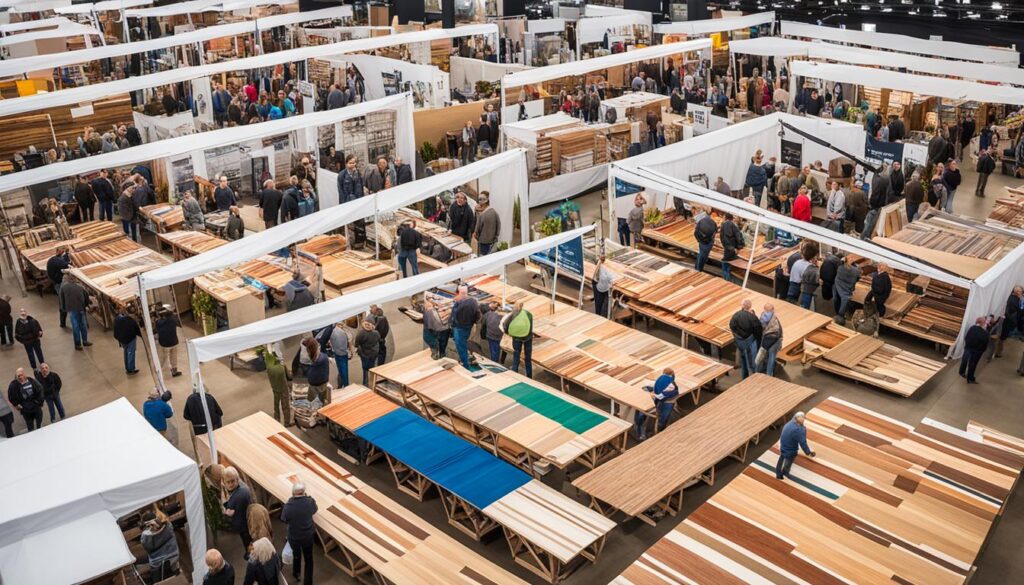
With its aesthetic appeal, durable options, sustainability, and technological advancements, the wood flooring market continues to thrive, offering homeowners and businesses a wide range of choices to enhance their spaces with the enduring beauty of wood.
Affordable Wood Flooring Options
Adding the timeless elegance of wood flooring to your home doesn’t require an extravagant budget. There are several affordable wood flooring options that can transform your space without breaking the bank. Whether you’re looking for a rustic charm or a modern aesthetic, these flooring options offer durability, aesthetic appeal, and affordability, catering to different preferences and budgets.
Pine Wood Flooring
Pine wood flooring is a popular choice for those seeking an affordable yet charming flooring option. Known for its warm and natural look, pine wood brings a touch of rustic beauty to any room. It is cost-effective and readily available, making it an excellent choice for budget-conscious homeowners.
Laminate Wood Flooring
Laminate wood flooring is a budget-friendly alternative that offers the look of real wood at a fraction of the cost. It is composed of multiple layers that mimic the appearance of hardwood, providing a durable and low-maintenance flooring option. With a range of styles and finishes available, laminate wood flooring allows you to achieve the desired aesthetic without compromising your budget.
Engineered Wood Flooring
Engineered wood flooring combines the beauty of natural wood with enhanced durability and stability. It is composed of multiple layers, with a top layer of real wood veneer and a core layer of high-density fiberboard. Engineered wood flooring is more affordable than solid hardwood, making it an excellent choice for those seeking a cost-effective and long-lasting flooring option.
Bamboo Wood Flooring
Bamboo wood flooring offers a sustainable and affordable alternative to traditional hardwood floors. Bamboo is a fast-growing grass that matures within a few years, making it an environmentally-friendly choice. It provides a unique and exotic look, adding character to any space. With its affordability and durability, bamboo wood flooring is a smart choice for budget-conscious homeowners.
Reclaimed Wood Flooring
Reclaimed wood flooring is a distinctive and eco-friendly option for those who value sustainability and character. It is sourced from old barns, factories, and other structures, giving it a rich history and unique aesthetic appeal. Reclaimed wood flooring offers a one-of-a-kind look that adds warmth and charm to any room, all while being an affordable choice.
With these affordable wood flooring options, you can enhance the beauty of your home while staying within your budget. Whether you prefer the rustic charm of pine wood, the versatility of laminate, the durability of engineered wood, the sustainability of bamboo, or the character of reclaimed wood, there is a flooring option to suit your style and wallet.
| Wood Flooring Option | Durability | Aesthetic Appeal | Affordability |
|---|---|---|---|
| Pine Wood Flooring | ⭐⭐⭐ | ⭐⭐⭐ | ⭐⭐⭐⭐ |
| Laminate Wood Flooring | ⭐⭐⭐ | ⭐⭐⭐ | ⭐⭐⭐⭐⭐ |
| Engineered Wood Flooring | ⭐⭐⭐⭐ | ⭐⭐⭐⭐ | ⭐⭐⭐ |
| Bamboo Wood Flooring | ⭐⭐⭐⭐ | ⭐⭐⭐⭐ | ⭐⭐⭐ |
| Reclaimed Wood Flooring | ⭐⭐⭐⭐ | ⭐⭐⭐⭐⭐ | ⭐⭐⭐ |
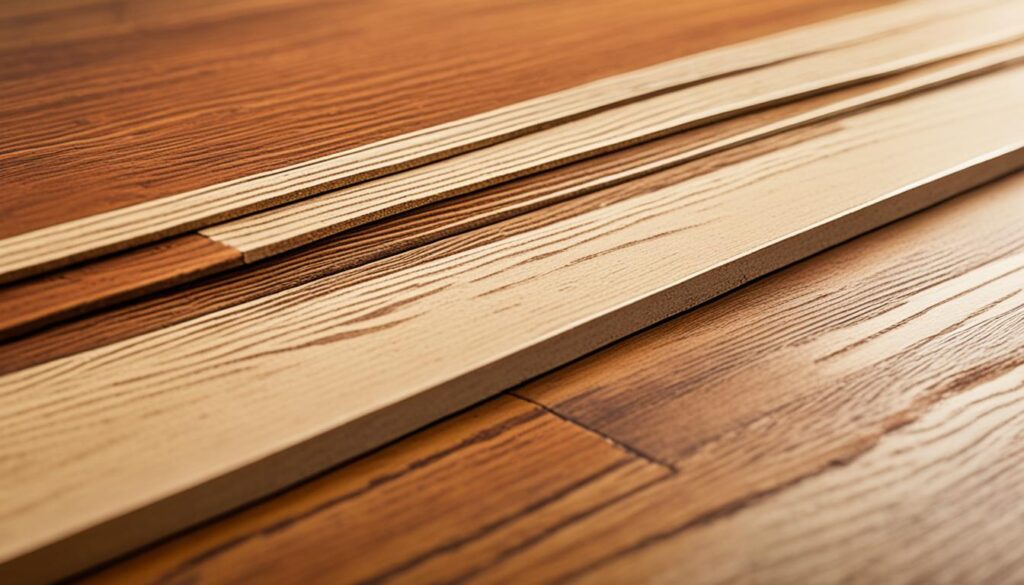
Conclusion
Wood floor renovation seamlessly merges tradition and innovation, offering sustainable design solutions that bring timeless elegance and aesthetic appeal to any space. Throughout history, hardwood flooring has evolved to meet the changing needs and trends of modern living. Today, it continues to impress with its durability and affordability, making it a popular choice amongst homeowners.
By embracing sustainable practices and incorporating the natural beauty of wood, homeowners can create environments that are not only visually stunning but also environmentally conscious. Wood floor renovation is an investment that adds character and value to any home, as it blends the charm of traditional craftsmanship with cutting-edge design.
Whether you prefer classic hardwood or opt for the versatility of engineered wood, the durability and aesthetic appeal of wood flooring remain unrivaled. With its timeless elegance and ability to adapt to various interior styles, wood flooring remains a staple choice for those seeking a flooring option that embodies both tradition and innovation.
